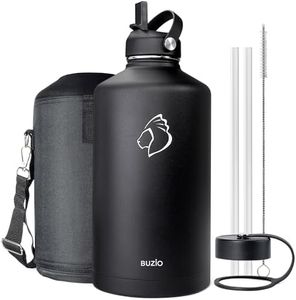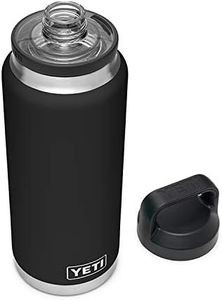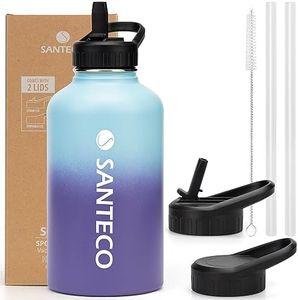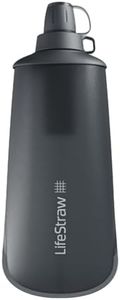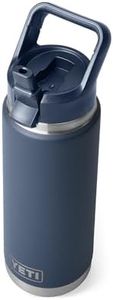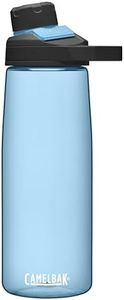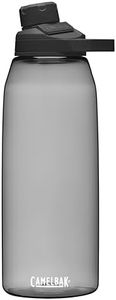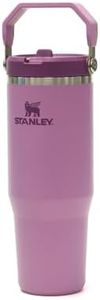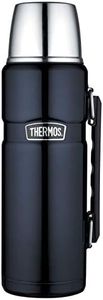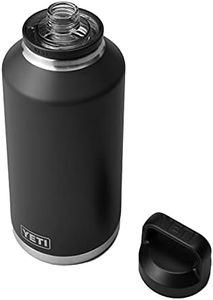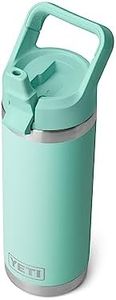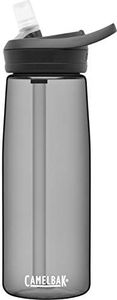We Use CookiesWe use cookies to enhance the security, performance,
functionality and for analytical and promotional activities. By continuing to browse this site you
are agreeing to our privacy policy
10 Best Hiking Water Bottles
From leading brands and best sellers available on the web.Buying Guide for the Best Hiking Water Bottles
Choosing the right hiking water bottle is essential for staying hydrated and comfortable on your adventures. The best water bottle for you will fit your hike’s duration, climate, and your own preferences for weight, ease of use, and durability. Consider how easy it is to carry, refill, clean, and drink from your bottle, and how well it maintains your water's temperature or resists wear in the outdoors.CapacityCapacity refers to how much water the bottle can hold, usually measured in liters or ounces. This is important because it determines how long you can go without refilling. Bottles typically range from small (around 500ml/17oz), good for short walks or for kids, to large (1 liter/34oz or more), suitable for longer hikes or hot days. If you like to hike short distances or have frequent access to water, a smaller bottle will keep your pack lighter; if you go on longer treks or hike in remote areas, a larger bottle helps you stay hydrated without constant refilling.
MaterialHiking water bottles are most commonly made from plastic, stainless steel, or silicone. This matters because it affects the weight, durability, insulation, and taste of your water. Plastic bottles are lightweight and affordable but may retain tastes or odors. Stainless steel bottles are heavier but offer better durability and insulation to keep water cold or hot. Silicone bottles, especially collapsible ones, can save space but may not be as tough. Choose the material based on your priorities – for lightness and basic use, go for plastic; for temperature control or ruggedness, stainless steel is best; for ultralight packing, silicone could be ideal.
WeightWeight indicates how much the bottle adds to your pack when empty. Lighter bottles help reduce fatigue on long hikes, while heavier bottles (usually those with insulation or made from steel) can be worthwhile if protecting your drink’s temperature is a priority. If cutting pack weight is essential, look for lightweight plastic or collapsible designs; if comfort and insulation matter more, a little extra weight may be acceptable.
InsulationInsulation refers to the bottle’s ability to keep water cold or hot for longer periods. Insulated bottles, often double-walled, will keep drinks at your preferred temperature for hours but tend to be heavier and sometimes bulkier. Non-insulated bottles are lighter and simpler but won’t regulate temperature. If you mostly carry water and don’t mind the temperature, choose a basic bottle; if keeping water cold or hot is important, especially in extreme climates, invest in an insulated option.
Mouth OpeningMouth opening is how wide the opening at the top of the bottle is, which affects ease of filling, cleaning, and drinking. Wide-mouth bottles are easier to fill from streams or add ice to and can be easier to clean, but may spill more easily. Narrow-mouth bottles are better for sipping on the move but can be harder to fill or clean. Consider whether fast refills and easy cleaning, or secure, spill-free drinking, is more important to you.
DurabilityDurability is about how well the bottle withstands drops, rough handling, or exposure to the elements. Bottles made from stainless steel or thick plastic are more rugged and last longer under tough conditions. Collapsible and ultralight bottles may be less durable. If you often hike in rugged terrain or tend to drop things, prioritize a bottle known for its toughness.
Ease of CleaningHow easy it is to clean your bottle ensures your water stays fresh and your health isn’t compromised. Wide openings, simple shapes, and dishwasher-safe materials make cleaning easier. Bottles with complicated lids, straws, or hard-to-reach corners can trap dirt or mold. If you value convenience, choose a bottle you can easily scrub or toss in the dishwasher.
PortabilityPortability covers how easily a bottle fits into your pack or attaches to your gear. Some have built-in handles, loops, or carabiner clips, while collapsible bottles can shrink to save space. If you want quick access, look for bottles that fit in side pockets or attach securely; if you’re packing light or tight, consider collapsible options.
